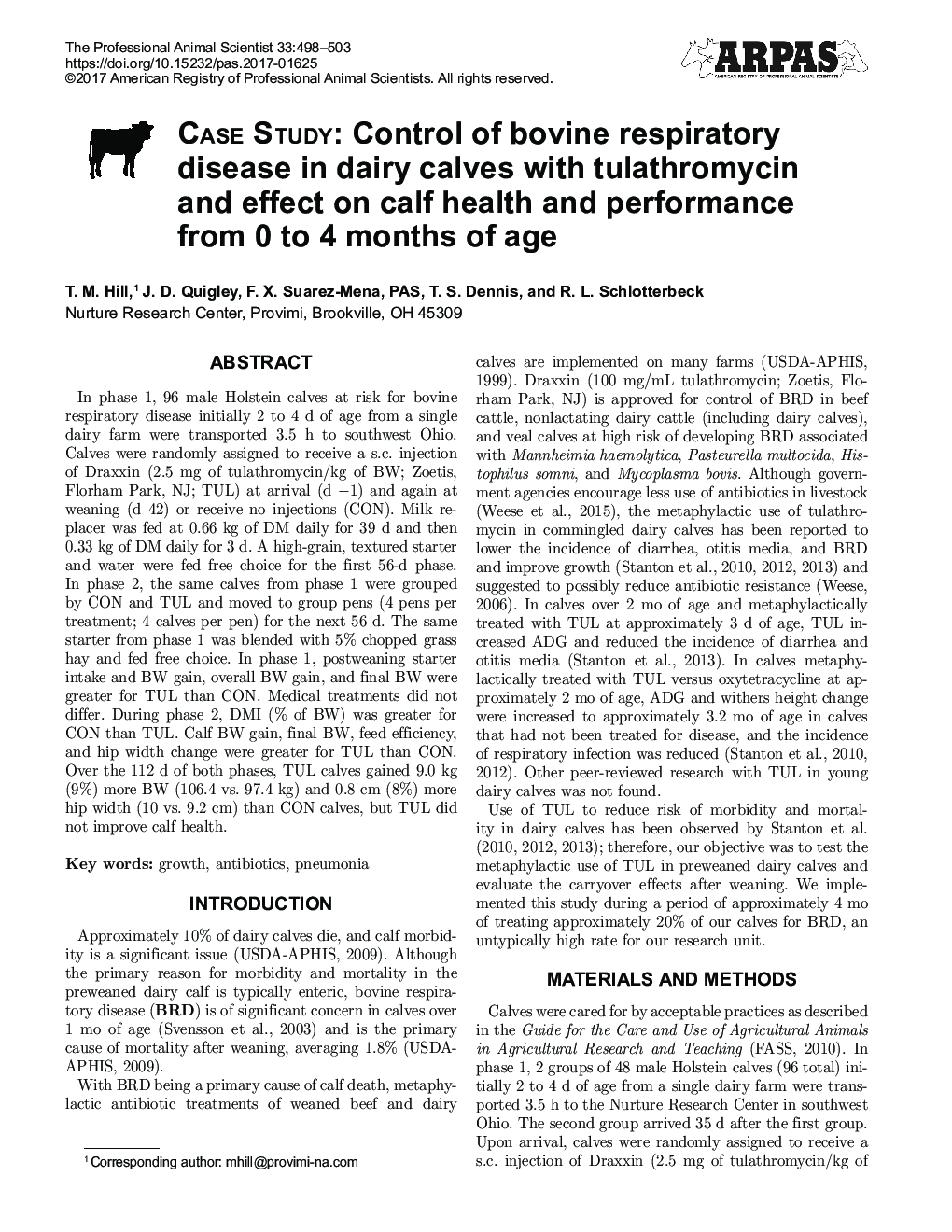| Article ID | Journal | Published Year | Pages | File Type |
|---|---|---|---|---|
| 8503746 | The Professional Animal Scientist | 2017 | 6 Pages |
Abstract
In phase 1, 96 male Holstein calves at risk for bovine respiratory disease initially 2 to 4 d of age from a single dairy farm were transported 3.5 h to southwest Ohio. Calves were randomly assigned to receive a s.c. injection of Draxxin (2.5 mg of tulathromycin/kg of BW; Zoetis, Florham Park, NJ; TUL) at arrival (d â1) and again at weaning (d 42) or receive no injections (CON). Milk replacer was fed at 0.66 kg of DM daily for 39 d and then 0.33 kg of DM daily for 3 d. A high-grain, textured starter and water were fed free choice for the first 56-d phase. In phase 2, the same calves from phase 1 were grouped by CON and TUL and moved to group pens (4 pens per treatment; 4 calves per pen) for the next 56 d. The same starter from phase 1 was blended with 5% chopped grass hay and fed free choice. In phase 1, postweaning starter intake and BW gain, overall BW gain, and final BW were greater for TUL than CON. Medical treatments did not differ. During phase 2, DMI (% of BW) was greater for CON than TUL. Calf BW gain, final BW, feed efficiency, and hip width change were greater for TUL than CON. Over the 112 d of both phases, TUL calves gained 9.0 kg (9%) more BW (106.4 vs. 97.4 kg) and 0.8 cm (8%) more hip width (10 vs. 9.2 cm) than CON calves, but TUL did not improve calf health.
Keywords
Related Topics
Life Sciences
Agricultural and Biological Sciences
Animal Science and Zoology
Authors
T.M. Hill, J.D. Quigley, F.X. PAS, T.S. Dennis, R.L. Schlotterbeck,
